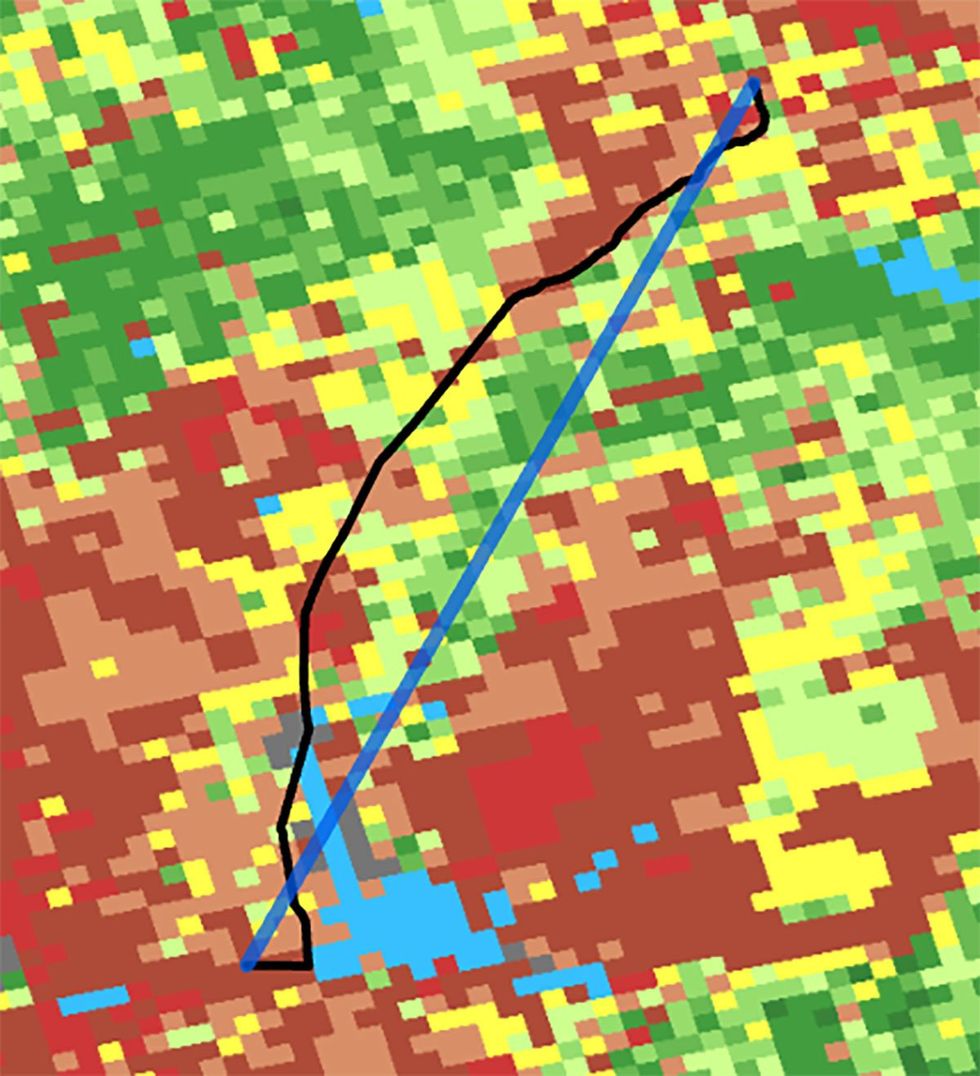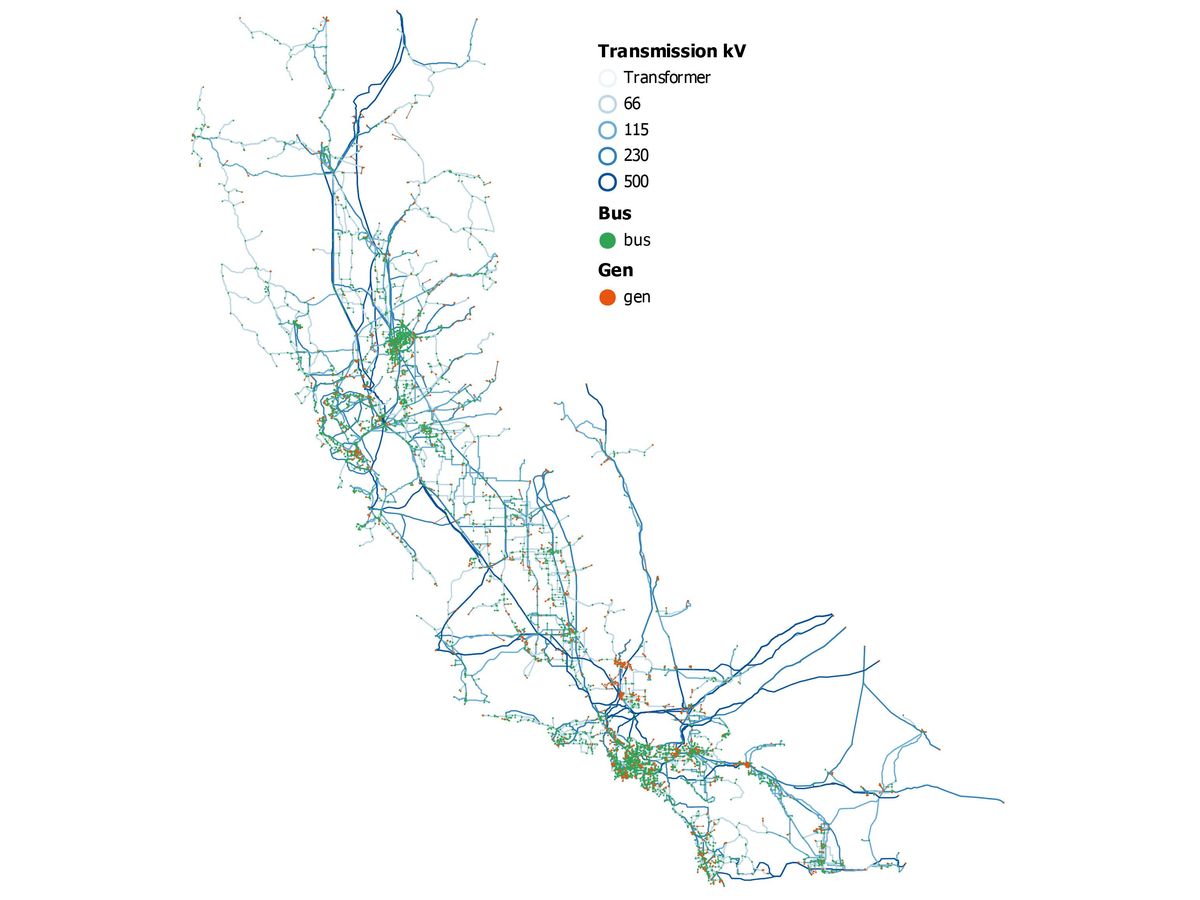This article is part of our exclusive IEEE Journal Watch series in partnership with IEEE Xplore.
Studying power grids can involve many privacy and security concerns, since researchers must be careful not to inadvertently reveal personal information or critical infrastructure vulnerabilities. But a new synthetic power grid offers planners and researchers a safe way to develop future power grids without the risk of compromising valuable data. What’s more, the California Test System (CATS) incorporates geographical data that will help planners account for complex factors, such as increasingly extreme weather events, fluctuations in power supply from renewable sources, and socioeconomic factors.
Most existing synthetic power grids lack geographical data. “This makes it hard to perform studies that include a geographic component, [for example] related to weather, climate, and demographics,” explains Sofia Taylor, a Ph.D. student at the University of Wisconsin–Madison’s Department of Electrical and Computer Engineering.
To create CATS, Taylor and her colleagues used publicly available data of the locations of California’s actual electric infrastructure, including substations, power plants, and more than 10,000 transmission lines. Then, to create their model, they connected those components using power-flow simulations to produce realistic but simplified and estimated parameters—therefore not compromising any real data that could pose security or privacy risks.
The researchers designed CATS so that GIS software and real-world geographical data can be added and leveraged by individual research teams to conduct customized studies. Temporal data capturing fluctuations in renewable generation and electricity demand at an hourly resolution are also incorporated into the model, therefore allowing users to simulate grid operations over time.
As a result, CATS offers researchers a giant, realistic test bed for future grid operations. Although the model is built using data from California, it can be used to evaluate algorithms for operating and planning electric grids in other geographical locations. CATS is freely available on GitHub, and is described in a study published in the March issue of IEEE Transactions on Energy Markets, Policy and Regulation.

This advance paves the way for more data sharing and openness, notes Aditya Rangarajan, a Ph.D. student at the University of Wisconsin–Madison who was also involved in the study.
Typically, he says, “it is hard to publish study results due to the need to protect the underlying grid data.” Such a problem won’t exist with studies done through CATS, he explains, since the model doesn’t exactly replicate, but rather simulates, California’s grid.
Taylor adds that CATS can also help spread information beyond the experts. “It can help demonstrate the impact of policies and new technology in a tangible way, allowing policymakers and the public to better interpret results,” she says.
Already, the tool is being used in conjunction with weather and climate data to plan out future grids. The University of Wisconsin–Madison team is using CATS to test grid models that identify and mitigate wildfire risks and power outages, for example by identifying where lines can be de-energized or placed underground. As of now, they are using real wildfire risk and demographic data for California along with CATS, but they plan to eventually broaden the scope of this work to other regions.
“Our group and others are also studying power-systems policies, operations, and planning with a social-equity lens,” Taylor says. Her team is currently using CATS to expand access to electric-vehicle charging infrastructure for underserved communities that are powered by Pacific Gas & Electric.
She says her team hopes to expand the kinds of socioeconomic and environmental data that CATS can utilize, including data on additional environmental hazards (such as sea-level rise and flooding), demographics (such as income data and metrics of social vulnerability), and the expansion of new technologies (such as renewable energy, electric vehicle charging, and the production of hydrogen through electrolysis).
For now, the team is working on incorporating 80 years of historical weather data from the Copernicus ERA-5 project, which will be useful for modeling the effect of varying weather conditions on current and future renewable generation.
Michelle Hampson is a freelance writer based in Halifax. She frequently contributes to Spectrum's Journal Watch coverage, which highlights newsworthy studies published in IEEE journals.



